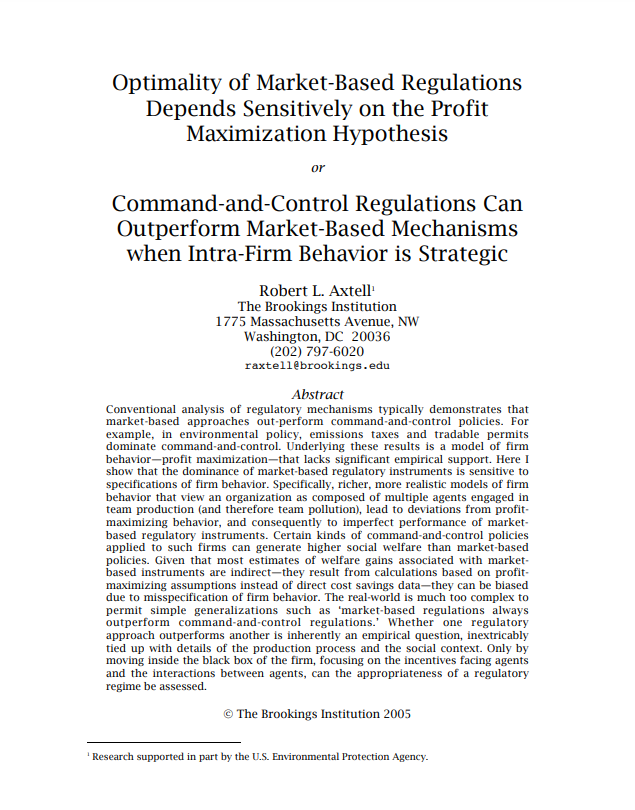Conventional analysis of regulatory mechanisms typically demonstrates that market-based approaches out-perform command-and-control policies. For example, in environmental policy, emissions taxes and tradable permits dominate command-and-control. Underlying these results is a model of firm behavior—profit maximization—that lacks significant empirical support. Here I show that the dominance of market-based regulatory instruments is sensitive to specifications of firm behavior. Specifically, richer, more realistic models of firm behavior that view an organization as composed of multiple agents engaged in team production (and therefore team pollution), lead to deviations from profit-maximizing behavior, and consequently to imperfect performance of market-based regulatory instruments. Certain kinds of command-and-control policies applied to such firms can generate higher social welfare than market-based policies. Given that most estimates of welfare gains associated with market- based instruments are indirect — they result from calculations based on profit-maximizing assumptions instead of direct cost savings data — they can be biased due to misspecification of firm behavior. The real-world is much too complex to permit simple generalizations such as ‘market-based regulations always outperform command-and-control regulations.’ Whether one regulatory approach outperforms another is inherently an empirical question, inextricably tied up with details of the production process and the social context. Only by moving inside the black box of the firm, focusing on the incentives facing agents and the interactions between agents, can the appropriateness of a regulatory regime be assessed.
Optimality of Market-Based Regulations Depends Sensitively on the Profit Maximization Hypothesis
Citation:
Robert Axtell, “Optimality of Market-Based Regulations Depends Sensitively on the Profit Maximization Hypothesis” or “Command-and-Control Regulations Can Outperform Market-Based Mechanisms when Intra-Firm Behavior is Strategic”, The Brookings Institution, 2005.
